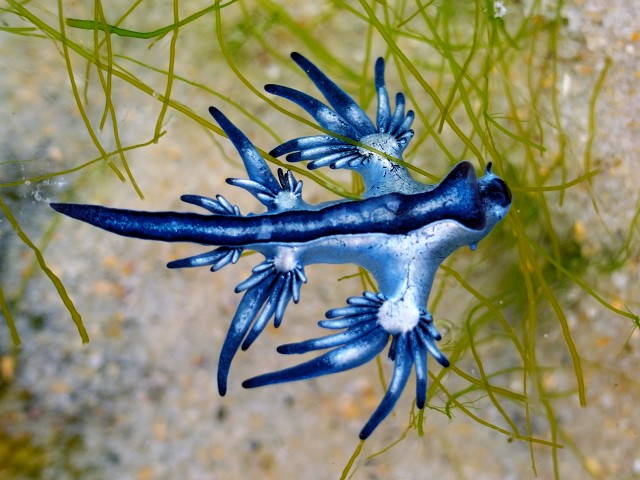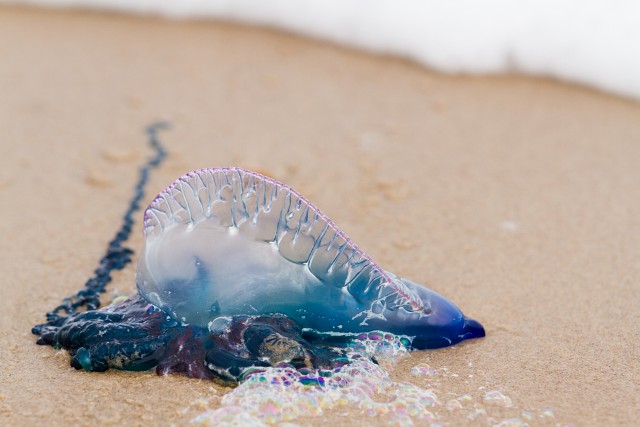UTRGV professor: Marvel at blue dragons, but don’t touch
Friday, May 22, 2020
Community
By Maria Elena Hernandez
RIO GRANDE VALLEY, TEXAS – Nature's camouflage makes one sea predator's appearance not only a rare sight, but also an interesting one.
Consider the blue dragons, a type of sea slug recently spotted on the Texas Gulf Coast.
Beachgoers shared photos of the shell-less gastropods with the Padre Island National Seashore.
"It's kind of a rare phenomenon," said Dr. David Hicks, UTRGV professor and director of the UTRGV School of Earth, Environmental, and Marine Sciences.
He said the blue dragon - formally glaucus atlanticus - usually is found in the open sea, traveling near its prey, the Portuguese man o' war.
“Every now and then you'll have a pocket of water mass that gets entrained into a current and starts moving it toward shore from the offshore environment,” Hicks said. “And if that water mass has this community of organisms in it, then it will bring them onto the shore.”
Blue dragons are tiny, usually growing to about 25 millimeters (about an inch) long.
“They have that unique adaptation of living right there at the surface of the water,” Hicks said.


That accounts for their countershading, which protects them from predators. The blue seen looking down at a blue dragon actually is its underside – these sea slugs float on their backs.
“When they're viewed from their top, they blend in with the sky above. And viewed from looking down at the ocean, they blend in with the ocean," he said.
But don't let this tiny, colorful creature fool you.
“Marvel at how pretty they are and maybe take a picture, but I wouldn't pick one up,” he warned.
That’s because the sea slug uses its prey’s defenses for itself.
“Whenever the blue dragon consumes the Portuguese man o' war, it'll actually take some of those stinging cells and has sacks where it stores them on its own body," Hicks said. “Now he's protected. Because if anything touches it, it will get stung, just as if it had touched the Portuguese man o' war."
The Padre Island National Seashore, which shared photos of blue dragons, is located in Corpus Christi. A local media outlet reported a sighting at South Padre Island.
Hicks, the UTRGV SEEMS director, said that while he wouldn't be surprised to hear of more blue dragons along South Padre Island, sightings would depend on a convergent current north of Port Mansfield.
“This converging current keeps those two water masses separated sometimes,” he said.
ABOUT UTRGV
The University of Texas Rio Grande Valley (UTRGV) was created by the Texas Legislature in 2013 as the first major public university of the 21st century in Texas. This transformative initiative provided the opportunity to expand educational opportunities in the Rio Grande Valley, including a new School of Medicine and a School of Podiatry, and made it possible for residents of the region to benefit from the Permanent University Fund – a public endowment contributing support to the University of Texas System and other institutions.
UTRGV has campuses and off-campus research and teaching sites throughout the Rio Grande Valley including Brownsville (formerly The University of Texas at Brownsville campus), Edinburg (formerly The University of Texas-Pan American campus), Harlingen, Weslaco, McAllen, Port Isabel, Rio Grande City and South Padre Island. UTRGV, a comprehensive academic institution, enrolled its first class in the fall of 2015; the School of Medicine welcomed its first class in the summer of 2016, and the School of Podiatric Medicine in the fall of 2022.
